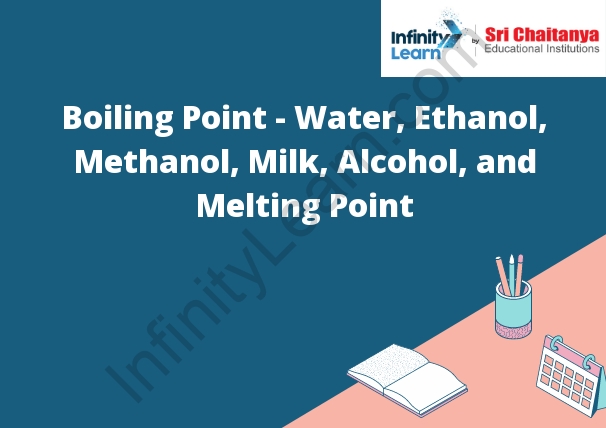Table of Contents
Introduction to Boiling Point Elevation
Boiling Point – Water: Boiling point elevation is a colligative property that occurs when a solute is dissolved in a solvent. The boiling point of the solvent is increased as a result of the addition of the solute. The boiling point elevation can be explained by the addition of the solute molecules to the solvent molecules. The addition of the solute molecules disrupts the hydrogen bonding between the solvent molecules, which increases the boiling point of the solvent.

Elaborate Description of Boiling Point
The boiling point is a physical property of a substance that represents the temperature at which it changes from a liquid phase to a gaseous phase at a given pressure. It is the temperature at which the vapor pressure of the liquid equals the atmospheric or applied pressure on the liquid surface.
The boiling point is a characteristic property of each substance and depends on factors such as the strength of intermolecular forces, molecular weight, and molecular structure. Generally, substances with stronger intermolecular forces, such as hydrogen bonding or dipole-dipole interactions, have higher boiling points. Heavier molecules with larger molecular weights also tend to have higher boiling points due to increased intermolecular forces.
Factors Affecting the Boiling Point of a Liquid
- The boiling point of a liquid is the temperature at which the vapor pressure of the liquid is equal to the atmospheric pressure. The boiling point is affected by a number of factors, including the type of liquid, the atmospheric pressure, and the surface area of the liquid.
- The type of liquid is the most important factor affecting the boiling point. Most liquids have a boiling point of 100 degrees Celsius at atmospheric pressure. However, some liquids, such as ammonia, have a boiling point of -33 degrees Celsius. The surface area of the liquid also affects the boiling point. A liquid with a large surface area will have a lower boiling point than a liquid with a small surface area.
- The atmospheric pressure also affects the boiling point. A liquid will boil at a higher temperature at higher altitudes, because the atmospheric pressure is lower.
Boiling Point of Water
Water boils at a temperature of 100 degrees Celsius, or 212 degrees Fahrenheit. The boiling point is the temperature at which the vapor pressure of a liquid is equal to the atmospheric pressure surrounding the liquid. The vapor pressure of a liquid is the pressure exerted by the vapor of the liquid.
Boiling Point of Ethanol
The boiling point of ethanol, also known as ethyl alcohol or grain alcohol, is approximately 78.37 degrees Celsius or 173.1 degrees Fahrenheit at atmospheric pressure. This is the temperature at which ethanol changes from a liquid phase to a gaseous phase, undergoing vaporization or boiling.
Boiling Point of Methanol
The boiling point of methanol, also known as methyl alcohol or wood alcohol, is approximately 64.7 degrees Celsius or 148.5 degrees Fahrenheit at atmospheric pressure. This is the temperature at which methanol changes from a liquid phase to a gaseous phase through vaporization or boiling.
Boiling Point of Milk
The boiling point of milk is generally slightly higher than that of water, which is 100 degrees Celsius or 212 degrees Fahrenheit at sea level. This is because the presence of dissolved substances in milk, such as proteins and minerals, can raise the boiling point slightly.
Boiling Point of Alcohol
The boiling point of alcohol can vary depending on the specific type of alcohol. Here are the approximate boiling points of some common alcohols at atmospheric pressure:
- Methanol (methyl alcohol): 64.7 degrees Celsius or 148.5 degrees Fahrenheit.
- Ethanol (ethyl alcohol): 78.37 degrees Celsius or 173.1 degrees Fahrenheit.
- Isopropanol (isopropyl alcohol): 82.6 degrees Celsius or 180.7 degrees Fahrenheit.
- Butanol (butyl alcohol): 117.7 degrees Celsius or 243.9 degrees Fahrenheit.
- Pentanol (amyl alcohol): Approximately 137-139 degrees Celsius or 279-282 degrees Fahrenheit.
These boiling points are approximate values and can vary slightly depending on the purity of the alcohol and the atmospheric pressure. It’s important to note that alcohol vapors are flammable, so caution should be exercised when heating or handling them.








